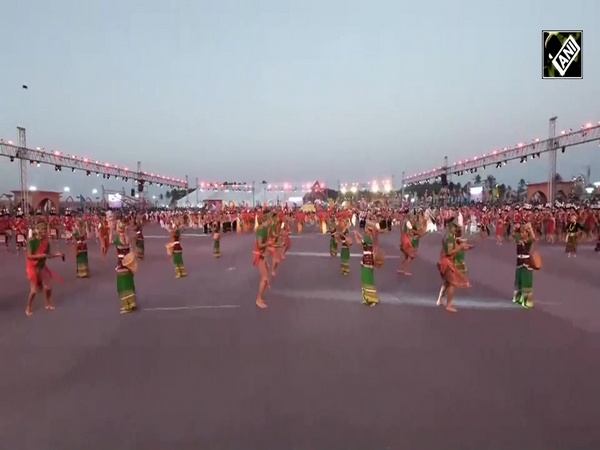
Comic books portray exaggerated physical differences between male and female superheroes
May 02, 2019
Washington D.C. [USA], May 2 : Within the pages of comic books of superheroes like Thor and Black Widow, male superheroes are portrayed as average obese, while females are shown as average close to underweight. They do not have a healthy body mass index (BMI), suggest researchers.
According to the study published in the Journal of Evolutionary Behavioral Sciences, researchers collected BMI data for 3,752 Marvel Comics characters and examined the visualization of male and female superheroes, paying attention to physical dimensions and costuming that accentuated hyper-masculine or hyper-feminine features such as shoulder-to-waist ratio, jawlines, upper body muscularity, waist-to-hip ratio and breast morphology.
They found that male comic book superheroes were on average "obese," whereas females averaged at the low end of normal weight. The male higher body mass was caused by extreme upper-body muscularity, with male shoulder-to-waist ratios far above human limits. This is in stark contrast to low weight female superhero bodies with far-lower waist-to-hip ratios than average humans.
"The main findings were that comic book characters are an expression of supernormal stimuli, and they have body morphology that is beyond what humans are capable of having. For male and female characters, there are certain characteristics that are associated with masculinity and femininity; for males, that tends to be wide shoulders and a narrow waist, and for females that tend to be a small waist-to-hip ratio and a larger bust. These are traits that humans tend to find attractive, but for comic book characters, artists take those traits and make them super-exaggerated. The male characters are hypermasculine and the female characters are hyperfeminine," said the lead author of the study, Johnsen.
"People who read comic books know that these body types are fantastical representations of the human form. It's pretty clear you can't create that body type through just diet and exercise. Even for the films, the costume designers have to modify costumes to make the actors look even more robust than they actually are in real life," said Johnsen.
The researchers were interested in providing a biological context for this pop-culture phenomenon. The physical appearance of comic book characters has been discussed and criticized for their use of exaggerated body-types, but that discussion rarely ever touches upon what those body types represent from a biological standpoint, said Johnsen.
"The hypermasculine and hyperfeminine forms of the male and female characters are an exaggerated reflection of endocrine markers that have evolved to signal youth, health, and fertility in real humans," she said.
Comics are another example in a long history of artists creating supernormal stimuli, emphasizing all the features people find attractive about the human form, said Johnsen.
"Comic books and films are sometimes trivialized as "kids' stuff," but increasingly they offer detailed and creative storylines and fine artistry. They also offer themes that reflect deep human emotion and desire. By studying comics from an evolutionary perspective, we gain insight as to the underlying origins for why the characters look the way they do, why we are attracted to them and why we connect with them on such a personal level," she said.




























